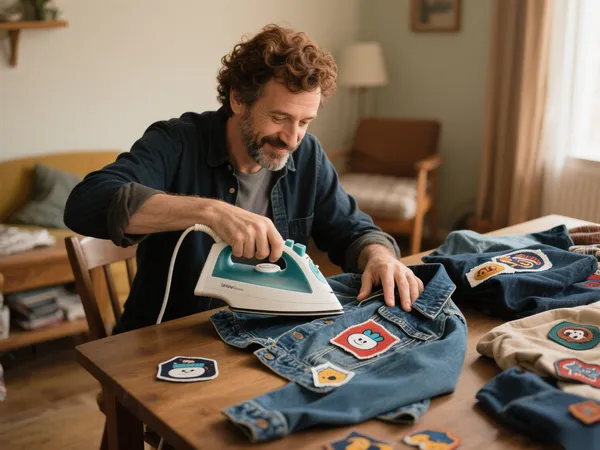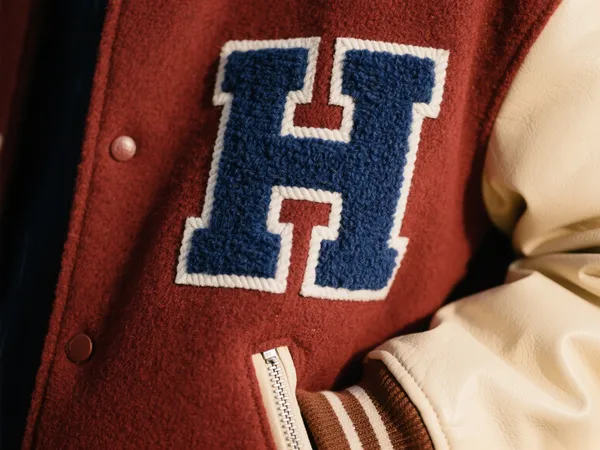Patches have made a huge comeback in fashion, DIY culture, and brand customization. Whether you’re updating a jacket, personalizing a backpack, or repairing torn clothes, choosing between patchs thermocollants et patchs à coudre can be a crucial decision. This blog post explores the pros and cons of each to help you decide which one is right for your project.

Que sont les patchs thermocollants ?
Patchs thermocollants come with a heat-activated adhesive backing that bonds to fabric when heat is applied—usually with a household iron. These are popular for quick applications and DIY beginners.
Pros of Iron-On Patches
- Quick and easy to apply: You don’t need sewing skills—just an iron and a flat surface.
- Clean finish: Since there’s no stitching, the patch looks seamless.
- Time-saving: Ideal for those who want instant results.
Cons of Iron-On Patches
- Limited durability: They may start to peel off after repeated washes or heavy use.
- Heat sensitivity: Not suitable for delicate or synthetic fabrics like nylon or silk.
- Permanent placement: Once ironed on, repositioning is difficult.
Iron-on patches are excellent for short-term use, display garments, or low-impact clothing like tote bags or decorative denim jackets.

Que sont les patchs à coudre ?
Patchs à coudre don’t rely on adhesive. Instead, they’re stitched into the fabric, either by hand or with a sewing machine. These are traditionally used on uniforms, backpacks, and clothes that require heavy-duty wear.
Pros of Sew-On Patches
- Superior durability: Can withstand machine washes and rough use.
- Versatilité: Works on any fabric type, including heat-sensitive materials.
- Custom placement and layering: Easily move or stack patches without damaging the base fabric.
Cons of Sew-On Patches
- Time-consuming: Requires basic sewing skills or access to a sewing machine.
- Visible stitching: May not suit people seeking a seamless look.
- Not ideal for last-minute fixes: Sewing takes longer compared to ironing.
Sew-on patches are ideal for long-term applications like scout uniforms, biker jackets, workwear, and school backpacks.

Iron On Patch vs Sew On: Side-by-Side Comparison
| Fonctionnalité | Patch thermocollant | Patch à coudre |
|---|---|---|
| Application Method | Heat (Iron) | Needle & Thread |
| Durabilité | Moderate | High |
| Fabric Compatibility | Limited (no synthetics) | Broad (including synthetics) |
| Ease of Use | Beginner-friendly | Nécessite des compétences en couture |
| Time Required | Fast | Slower |
| Idéal pour | Fashion, crafts, light use | Workwear, uniforms, frequent wash items |
Which One Should You Use?
Choisir entre iron-on patches vs sew-on patches ultimately depends on your needs:
- Go for iron-on if:
- You want a quick, no-fuss solution.
- You’re working with cotton or denim.
- The patch is decorative, not functional.
- Choose sew-on if:
- The item will undergo frequent washing or wear and tear.
- You want long-lasting results.
- You’re working with synthetic or heat-sensitive materials.
Some patch enthusiasts even use both methods—ironing the patch for initial placement and then sewing around the edges for added durability. This hybrid approach gives you the best of both worlds.

Tips for Applying Both Patch Types
- Pour les patchs thermocollants :
- Use a dry iron (no steam) set to the appropriate heat.
- Press firmly for 20-30 seconds.
- Allow it to cool before testing adhesion.
- Wash on gentle cycle or hand wash for longevity.
- Pour les patchs à coudre :
- Use matching or contrasting thread for style.
- Double-stitch high-stress areas.
- Consider using a thimble for thicker fabrics.
- Hand sewing gives you better control for tricky placements.
Réflexions finales
When it comes to iron-on patch vs sew-on, there’s no one-size-fits-all answer. Each method has its strengths, and the best choice depends on your garment, your goals, and how long you expect the patch to last. For fashion enthusiasts, DIY hobbyists, or anyone personalizing apparel, understanding these differences will help you create better, longer-lasting results.
Conclusion
Both patchs thermocollants et patchs à coudre have unique advantages. Whether you need speed or strength, your choice will influence the appearance, durability, and usability of your final design. Whichever method you choose, you’ll be adding character and creativity to your wardrobe—one patch at a time.



